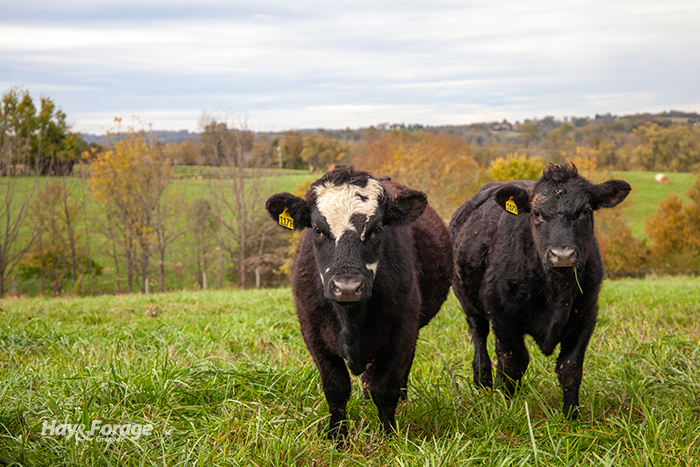
Feed costs are the greatest expense for a livestock operation, and with winter on the way, it will be prudent to plan for feed purchases in the months ahead. Buying bales doesn’t have to break the bank, though, and there are ways to offset feed costs yet this fall and early next spring.
In a recent article in the Iowa Beef Center’s Growing Beef newsletter, Beth Reynolds encourages producers to minimize winter feed costs by adding grazing days to the calendar and optimizing forage utilization. The education extension specialist with Iowa State University notes other practices, such as fall weed control and soil sampling, can also help raise the bottom line.
Graze corn residue. Cornstalks are a common crop residue for grazing cattle, and mature cows can usually maintain body condition on cornstalks with little to no protein supplementation. Reynolds explains this is because animals selectively graze higher quality plant parts, like leaves and husks; however, supplementation may be necessary depending on the class of livestock, grazing management, and weather conditions.
Turn cattle out to cornstalks as soon as possible after grain harvest to capitalize on corn residue quality. Then, keep an eye on forage availability and consider the animals’ ability to be selective.
“The amount of husk in the field is the best indicator of when it is time to move fields or begin supplementing,” Reynolds notes. “Stocking density and the rate of residue degradation significantly impacts how long cattle can rely on residue as a sole feedstuff.”
Take advantage of annual forages: Determine what grazing strategy is best suited to your operation to optimize forage utilization in fall pastures. With proper implementation, strip grazing has been shown to improve forage utilization and reduce waste when animals graze cover crops, crop residue, or stockpiled forage. Swath grazing is another option.
“Strip grazing and adjusting stocking densities can take 30% forage utilization and improve it to over 50% forage utilization simply by managing animal movement and behavior,” Reynolds writes. “Even small improvements in forage utilization can impact the number of days we can graze before needing stored feeds.”
Although it may be too late to plant annual forages for extended fall grazing, Reynolds suggests seeding cool-season species that will overwinter and offer a head start on grazing next spring. These include winter cereals like cereal rye, winter triticale, and winter wheat.
Control weeds. Fall weed control is a proactive step toward improving pasture conditions and forage production for next year. At this point in the season, plants are actively translocating energy reserves from shoots to roots, which enhances the efficiency of spot or broadcast herbicide applications.
“To be effective, the target weed needs healthy foliage capable of absorbing the herbicide,” Reynolds states. “Also, understand what desirable species might be affected, and carefully read herbicide labels to ensure you use the appropriate product, rate, and are aware of any restrictions.”
Create a fertilization plan. Creating a fertilizer plan is another practical step to benefit future forage production. Reynolds recommends sampling pasture soils every three to five years at the same time of year to monitor changes in soil health and fertility.
“Autumn tends to be a good time to sample because the ground is still accessible and it gives us some time to get samples taken, shipped to a lab, and analyzed before developing a fertilization plan,” she states.
Phosphorous, potassium, soil pH, and organic matter are generally the most common and most important features of a soil test, but there are packages available that include other nutrients. Reynolds reminds readers that a representative sample is a subset of 10 to 15 randomly collected soil cores that are thoroughly mixed together. Follow this procedure for every sampling area or field.

